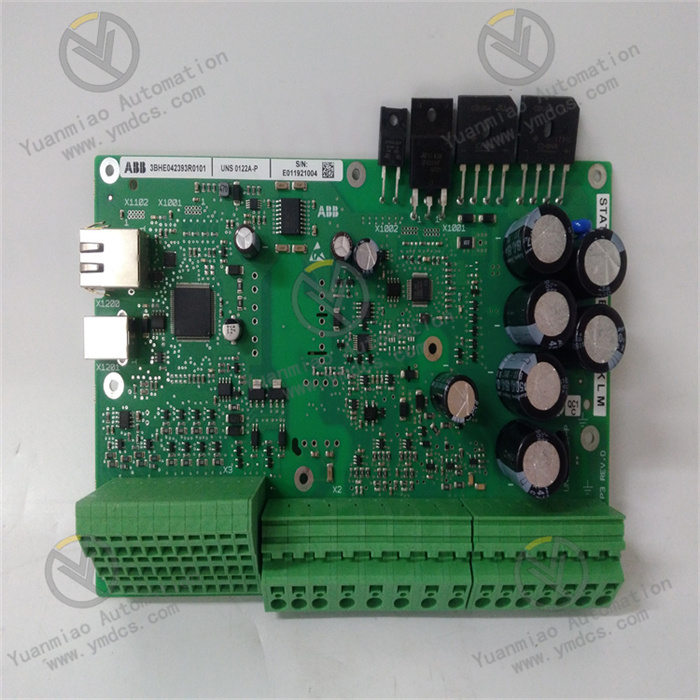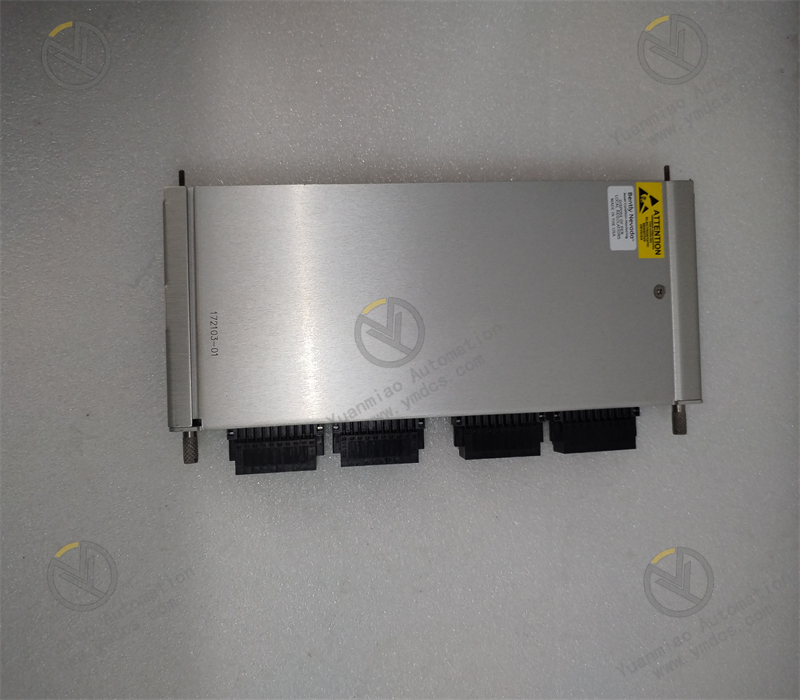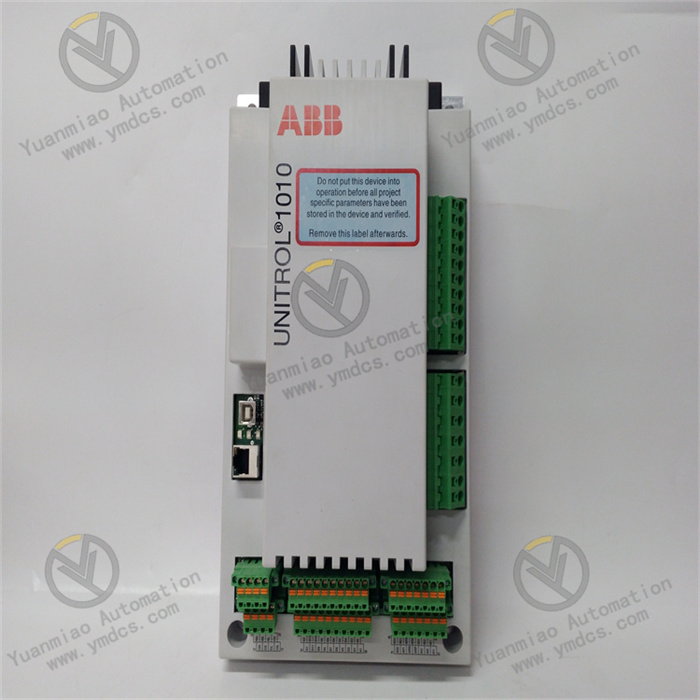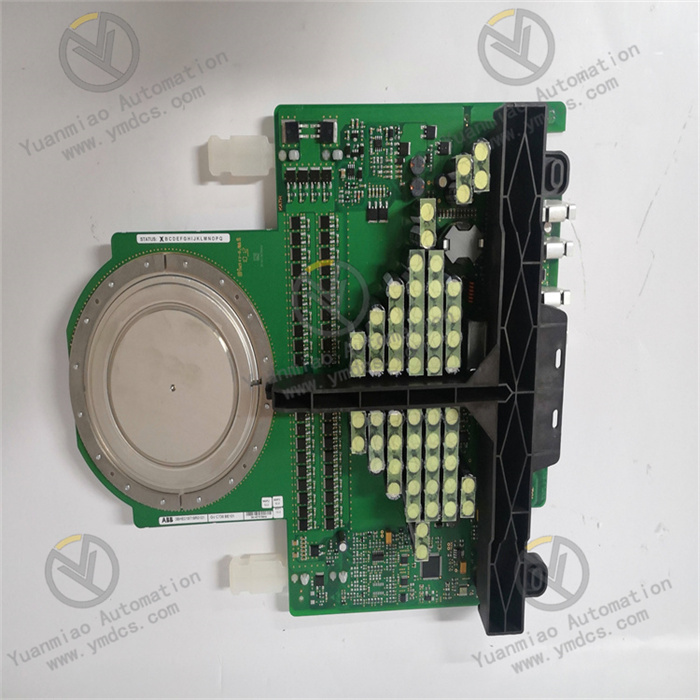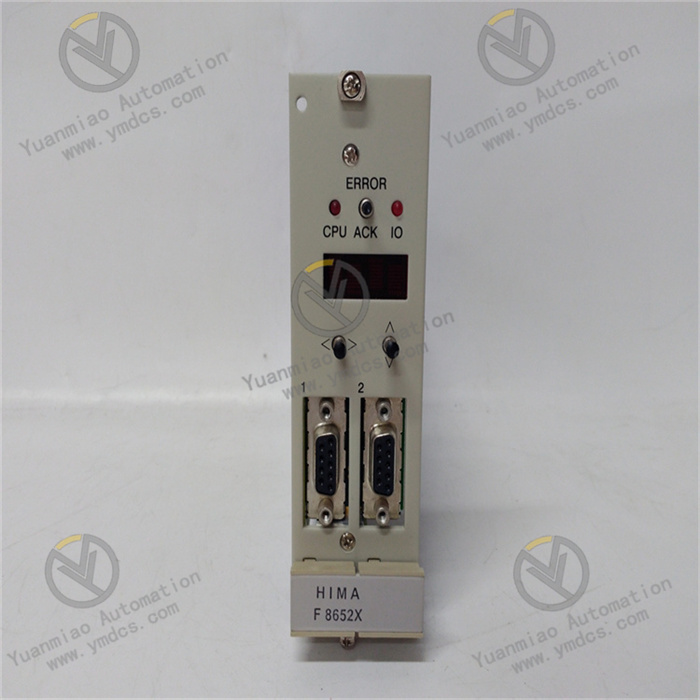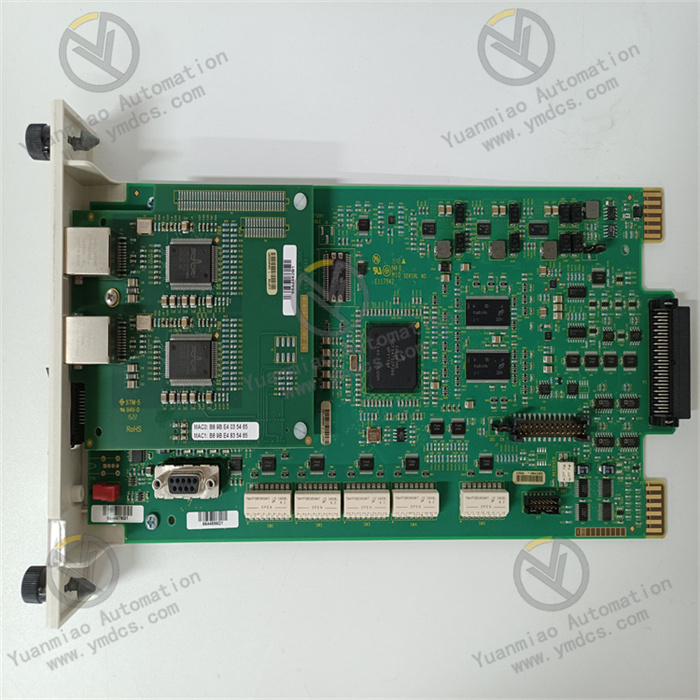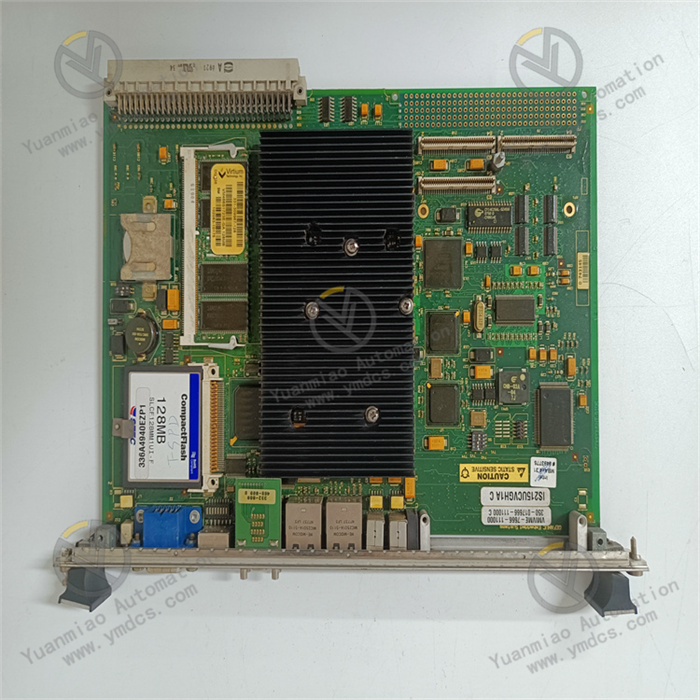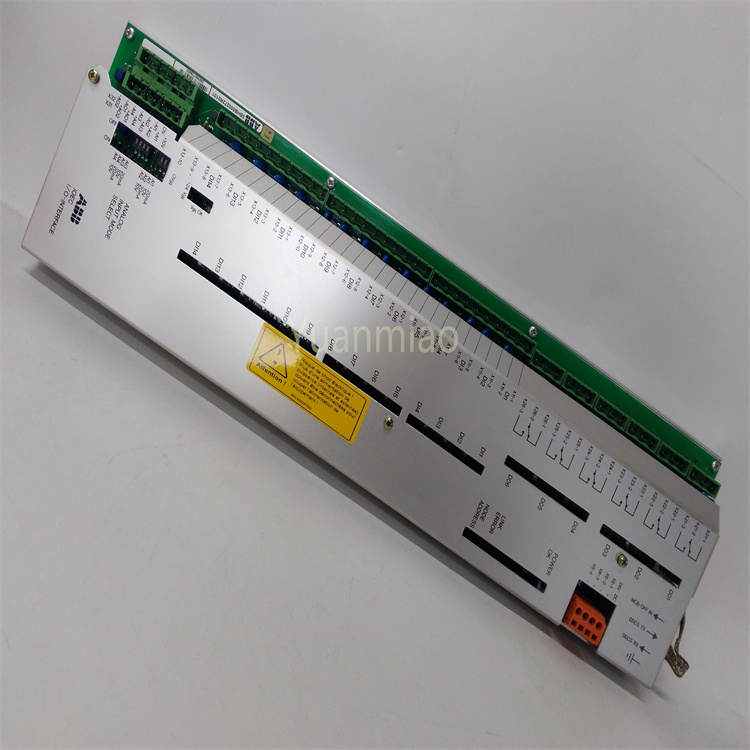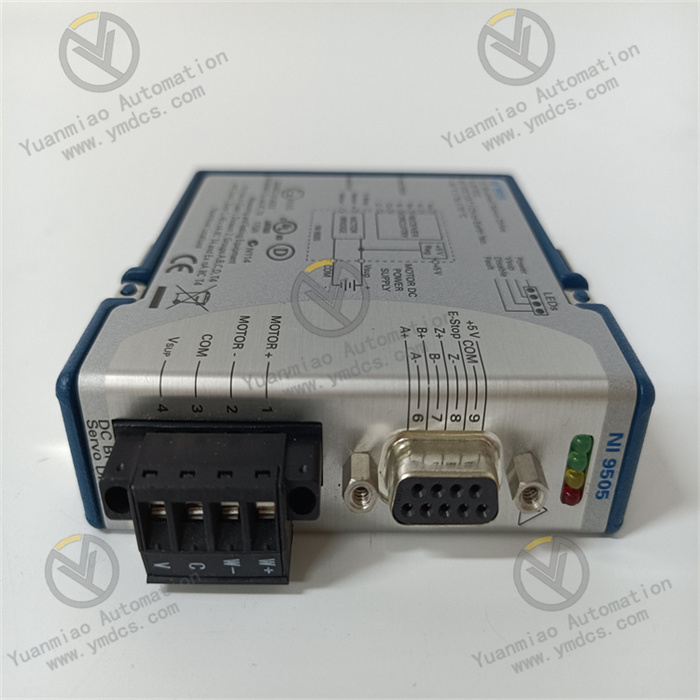Description
ABB PM802F 3BDH000002R1
I. Basic Positioning and Application Scenarios
Positioning: Belongs to the ABB AC 800F series PLC controllers and serves as a core component of the Advant Controller 800xA system, used to achieve logical control, data processing, and communication functions in industrial automation.
Application Fields: Suitable for manufacturing production line control, power system monitoring, petrochemical process control, building automation, and other scenarios, particularly outstanding in industrial environments requiring high reliability and real-time performance.
Application Fields: Suitable for manufacturing production line control, power system monitoring, petrochemical process control, building automation, and other scenarios, particularly outstanding in industrial environments requiring high reliability and real-time performance.
II. Key Technical Parameters
| Parameter Category | Specific Parameters |
|---|---|
| Processor | - 32-bit RISC processor - Main frequency: Up to 266 MHz (slightly lower performance than the subsequent PM803F model) |
| Memory | - 16 MB RAM (with battery backup, supporting data retention during power outages) |
| Power Supply | - 24V DC (±20% voltage fluctuation range) |
| Communication Interfaces | - Supports Ethernet (10/100 Mbps) - RS-232/RS-485 - Protocols such as PROFIBUS and Modbus |
| Signal Processing | - Supports digital/analog I/O expansion (requires matching I/O modules, such as the SM series) |
| Operating Environment | - Temperature: -25°C ~ +70°C - Humidity: 5%~95% (non-condensing) |
| Dimensions and Weight | - Dimensions: 239 mm (L) × 164 mm (W) × 202 mm (H) - Weight: Approximately 1.5 kg |
| Software Compatibility | - Requires ABB ControlBuilder M programming software (supports Ladder Diagram LD, Function Block Diagram FBD, etc.) |
| Redundancy Support | - Supports controller redundancy configuration (requires additional hardware) |
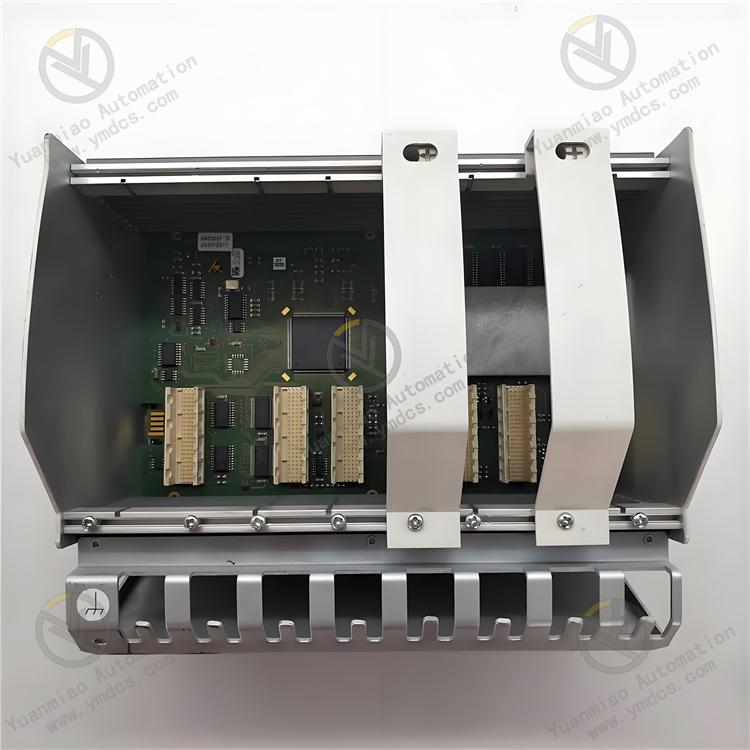
III. Functional Features and Advantages
Reliability Design
- Hardware Redundancy: Supports dual-controller hot standby redundancy, reducing single-point failure risks and enhancing system availability.
- Industrial-Grade Protection: Adapts to harsh environments such as wide temperature ranges, dust, and vibration, meeting the needs of long-term stable operation in industrial sites.
Communication and Integration Capability
- Built-in multiple standard communication protocols, enabling seamless integration with host computers (e.g., SCADA systems), smart instruments, and third-party devices to achieve factory-level data interconnection.
Programming and Expandability
- Supports IEC 61131-3 standard programming languages (LD, FBD, ST, etc.), offering flexible development.
- Flexibly configures I/O points through expansion modules (e.g., SM810 digital module, SM820 analog module) to adapt to control requirements of different scales.
Data Storage and Diagnostics
- Battery-backed memory ensures programs and data are not lost during power outages.
- Supports online diagnostic functions, quickly locating faults through status indicators (e.g., RUN, ERROR, COMM, etc.).
IV. Operation and Maintenance Key Points
(1) Installation Steps
- Rail Mounting: Fix the controller using a DIN rail to ensure secure installation and avoid vibration impacts.
- Wiring Specifications:
- Power Wiring: Confirm the correct polarity of 24V DC to avoid damaging the module due to reverse connection.
- Communication Wiring: The Ethernet interface can directly connect to a switch; RS-485 requires matching terminal resistors (adjusted according to the network topology).
- Module Expansion: Connect I/O modules via bus connectors to ensure unobstructed communication links.
(2) Programming and Debugging Process
- Software Configuration:
- Open ControlBuilder M, create a project, and add the PM802F controller model.
- Configure network parameters (e.g., IP address) to establish a communication connection with the controller.
- Program Development:
- Write control logic using ladder diagrams or function block diagrams, such as motor start/stop control and PID regulation.
- Compile the program and download it to the controller, debugging the logical correctness through online monitoring functions.
- Redundancy Setup (if required):
- Configure parameters for primary and standby controllers, test the switching logic, and ensure normal redundancy function.
(3) Routine Maintenance
- Status Monitoring: Regularly check the status of the controller's indicator lights. If the ERROR light is on, read fault codes (e.g., communication interruptions, module failures, etc.) through software.
- Hardware Inspection:
- Check for loose rail installations and secure cable connections.
- Clean dust from the module's surface to avoid overheating due to poor heat dissipation.
- Firmware Updates: Periodically upgrade firmware according to versions released by ABB to obtain performance optimizations and bug fixes (note: back up programs).

V. Comparison with PM803F
| Characteristics | PM802F (3BDH000002R1) | PM803F (3BDH000530R1) |
|---|---|---|
| Processor Main Frequency | 266 MHz | 400 MHz (performance improved by ~5%-10%) |
| Applicable Scenarios | Small-to-medium automation systems | Medium-to-large complex control scenarios (e.g., high-speed data processing) |
| Redundancy Support | Basic redundancy functions | More flexible redundancy configurations (e.g., hot-swapping support) |
| Software Compatibility | Supports V7.1SP2 and above | Compatible with higher-version software (superior functional expansion) |



